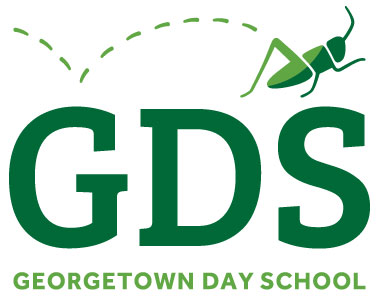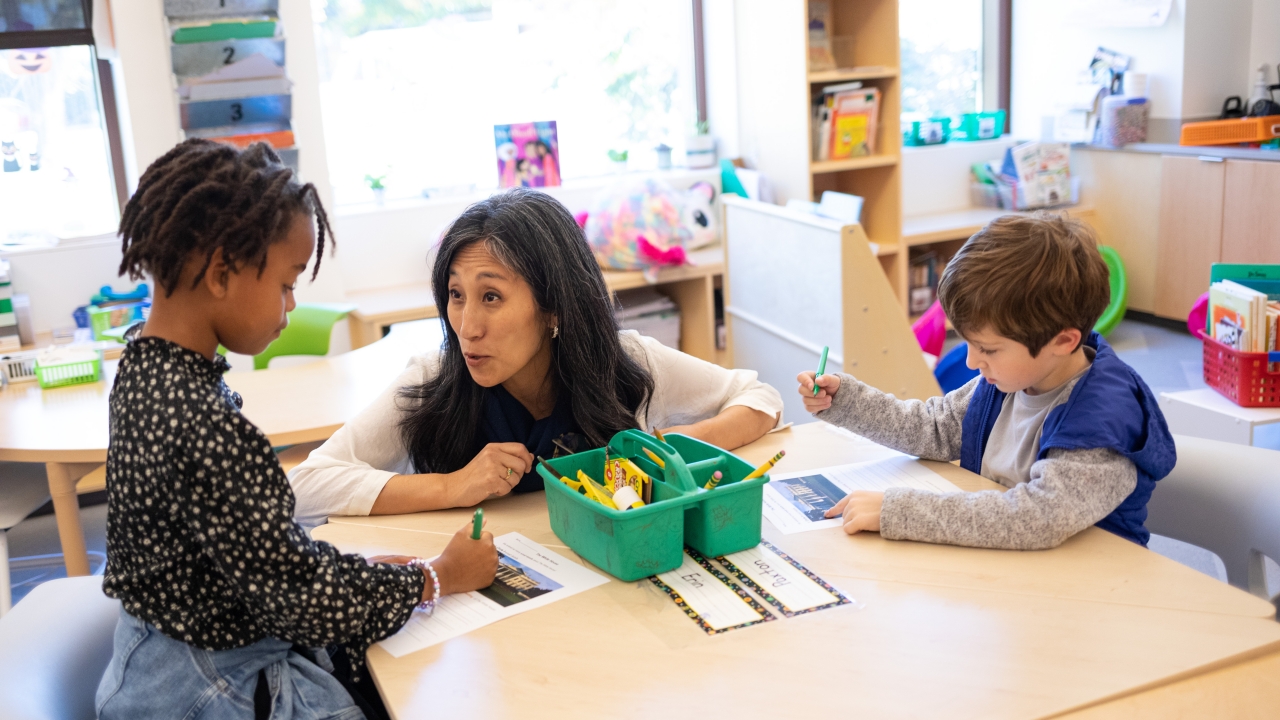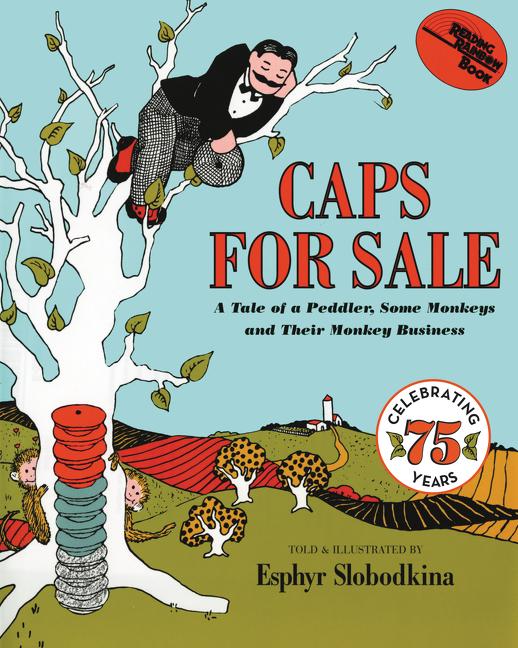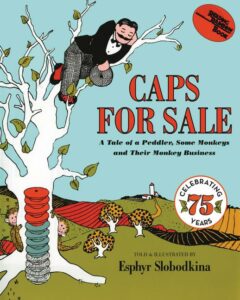Meg’s Minutes: A Teaching-in-Practice Series
As part of her process for getting to know GDS during her first year as Associate Head of School, Meg Goldner Rabinowitz has been visiting classrooms to learn first-hand about the excellent teaching and learning for which our School is known. In this series, she shares some of her reflections—through her lens as an educator and school leader—as a sort of annotated glimpse into life and learning at GDS.
I want to share a moment from my day, which encapsulates why I love working in a Pre-K through 12 school and provides another window into the exciting learning happening at GDS.
As I went to make a copy in the second-floor print room, I was greeted with a leftover handout that referenced one of my favorite childhood books, and one of the books I read to my children when they were little, Esphyr Slobodkina’s Caps for Sale. This sent me on an exploration of the author and her origins in Russia and then the United States. The book was first published in 1940, in the middle of the century that would span the author’s life. The story follows a peddler who sells hats (piled impressively upon his head) and comes upon a troop of monkeys while he is resting under a tree. They steal his hats, and he has to devise a way to convince them to return them. Hilarity ensues.
Reading the book’s title immediately called to my mind the line from the book, “You monkeys you, you give me back my hats!”, a line I had read aloud countless times.
In this handout, a whole world of reading, reasoning, making sense, and learning is made visible to me. The students are asked to use this text as a way of discovering plot, narrative, and sequencing. Rather than just a re-cap of the story (forgive the pun), students actually get to delve into the story, pull its visual components apart, and create a commentary that tracks the story’s components. This is a brilliant learning exercise.
 This lesson also serves as a foundation for computational thinking which builds our students’ knowledge of skills and how to apply fundamental concepts and reasoning to problem-solving. Computational thinking includes four elements: decomposition (taking ideas and problems apart), pattern recognition (looking for similarities or trends), algorithmic thinking (creating step-by-step instructions), and abstraction (focusing on what’s important). In my interpretation, each of these components is present in this activity asking our students to approach their understanding of Caps for Sale.
This lesson also serves as a foundation for computational thinking which builds our students’ knowledge of skills and how to apply fundamental concepts and reasoning to problem-solving. Computational thinking includes four elements: decomposition (taking ideas and problems apart), pattern recognition (looking for similarities or trends), algorithmic thinking (creating step-by-step instructions), and abstraction (focusing on what’s important). In my interpretation, each of these components is present in this activity asking our students to approach their understanding of Caps for Sale.
In my conversation with first-grade teacher Unushe Walker, she added the invaluable perspective of a teacher who is in the classroom with our first graders as they undertake this project. She shared that she had never read the book before coming to GDS six years ago and that this activity precedes her. I learned from speaking with Unushe that Caps for Sale is taught each fall as a building block in students’ learning about sequencing. Before Caps for Sale, the first-grade classrooms do a read-aloud of Jeanne Titherington’s Pumpkin, Pumpkin (which I also read aloud to my kids, just saying). As a whole class, students begin to talk about the language and the pictures of that story, with an eye to how the events unfold.
According to Unushe, the hope for the Caps for Sale exercise is that students can use the pictures in the story to identify the order of the story and also align the order of the pictures with the sequence words (“First,” “Next,” “Then,” “After that,” “Last,” “Finally”). Their next text is Jan Brett’s The Hat where students will add logic and reasoning to their sequencing skills. Ultimately, the students will use all of these sequencing skills, and their exploration of dialogue, hooks, closing sentences, foreshadowing, character development, setting, and onomatopoeia in their future readings and in their own writing. As the year progresses, students will implement and incorporate these skills into their narratives. Stay tuned for examples of those from our first graders later in the spring!







